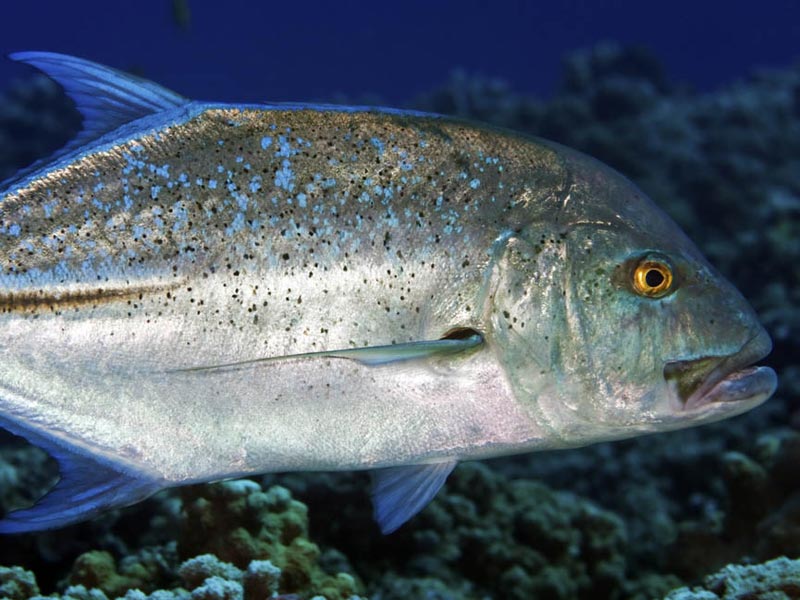Giant Trevally
ulua aukea
Caranx ignobilis
Most jacks or trevallies are swift predators that frequent open water near dropoffs or over reefs. They are usually bluish or greenish on the back, and silvery on the sides and undersides, which makes them difficult to spot from above or below. Jack's bodies are streamlined, deep, and narrow with deeply forked tails. Their hunting behavior intensifies in the early morning or late afternoon. To isolate or confuse their prey, schools of jacks make sudden and quick changes of direction. They use their speed to hunt and feed on other fish, and they forage on the bottom for crustaceans and other invertebrates. There are at least 24 known jacks in Hawai'i.
The Giant Trevally are also known as White Ulua or Giant Ulua. They may be seen very close to shore by themselves or in pairs. The ulua do travel in large schools in areas that are not heavily fished. Their coloring ranges from silvery to silvery black. Their identifying features are the steep profile of their head and a black spot at the base of the pectoral fin. The ulua can grow to over five feet and weigh almost 200 pounds. The Hawaiian name means "white". In ancient Hawaiʻi, sometimes a large ulua aukea was used as a substitution for human sacrifice.
